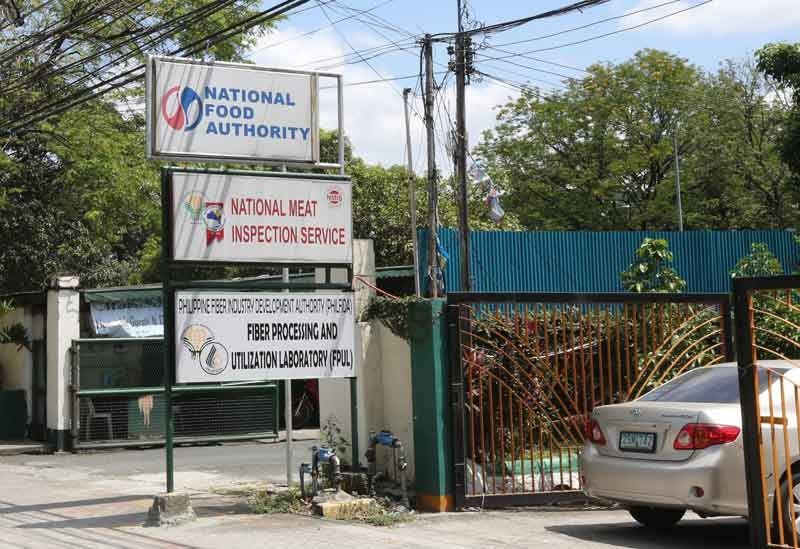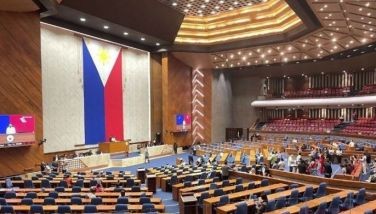COA flags NFA’s P5-billion fund diversion

MANILA, Philippines — The Commission on Audit (COA) has called out the National Food Authority (NFA) for diverting the P5.1-billion fund it received from the national government last year intended for the stabilization of the supply and prices of rice and corn.
Based on the COA’s annual audit report posted on its website yesterday, Congress allocated a total of P5.1 billion for NFA’s Food Security Program (FSP) last year.
COA said under Republic Act 10924 or the General Appropriations Act (GAA) of 2017, the allocated amount “shall be used specifically to stabilize the price and supply of rice and corn.”
NFA instead used the fund in paying its maturing debts, COA said.
COA’s records showed that the full amount was received by the NFA from the Department of Budget and Management last March 2, 2017.
COA said a review of NFA’s books revealed that P3.01 billion of the fund was instead deposited to the Bureau of Treasury as payment of the previous year’s guarantee fee of P510 million and contribution to the Debt Reserve Funds or sinking fund amounting to P2.5 billion.
COA said the remaining P2.09 billion was deposited by NFA to its Rice Collection Savings Account (RCSA) with the Land Bank of the Philippines (LBP) instead of to its Cereal Procurement Fund Account.
COA said two journal entry vouchers of NFA revealed that the amounts of P1.046 billion and P1.044 billion under its RCSA were instead paid to LBP and Development Bank of the Philippines, respectively, to cover the principal and interest on NFA’s loans.
COA said the diversion of the fund had severely affected the NFA’s Food Security Program last year, noting the shortfalls in the amount of palay (unhusked rice) procured from farmers as well as the subsidized NFA rice distributed in the market.
Based on COA records, NFA had only procured 28,514 metric tons of palay from individual farmers and farmer’s organizations last year, an accomplishment of only 18.58 percent of its target of 153,483 MT for the year.
The audit body said only 700,864 MT of NFA rice was distributed last year, short of 429,256 MT from its target of 1,130,120 MT.
“NFA could have used the subsidy for additional incentives to farmers to level up and/or compete with local traders in order to attain its objective of providing market for farmers’ produce with fair return on their investment in production cost so as to encourage farmers to sell their produce to the agency,” COA said.
COA said the diversion of the fund for the FSP had also contributed to the significant drop in NFA’s rice buffer stock. The audit body said last year, the NFA was only able to maintain a buffer stock enough for seven days, way below its 15-day buffer stock target.
Worse, COA said, during the lean months, NFA’s buffer stock was only good for five days from its three-week target.
“Had NFA attained its target procurement, it would not have only added to the mandatory buffer stock requirement, but would have likewise encouraged farmers to produce more and minimize the need to import rice, which utilizes foreign exchange reserves that eventually result in foreign or domestic borrowings for NFA,” COA said.
“Also, the procurement shortfall affected other programs of NFA, such as rice distribution and buffer stocking resulting in higher price of rice, unavailability of NFA rice in the market and lower inventory of rice in various NFA warehouses,” it added.
In a reply incorporated in the report, NFA said it had to pay its maturing loans to save on additional expenses in interest and documentary stamp tax, pointing out that the main cause of its financial losses is “charges due to its high level of outstanding debts.”
NFA said in 2016 alone, its financial charges amounted to P6 billion, way higher than the agency’s operating expenses of P4 billion.
NFA reasoned out that had it retained the fund in bank, it would only earn 0.1 to 0.25 percent interest as opposed to the 2.5-percent interest it saved by paying off the loans and documentary stamp tax.
NFA added that there was also a need “to ease the agency’s depleting credit lines.”
As to the shortfall in the procurement of palay from farmers, NFA said the government’s support price of P17 per kilogram of clean and dry palay could not compete with the prices being offered by private traders ranging from P18.40 per kg in January last year to P20.29 per kg that May.
In a rejoinder, COA said while it recognizes the NFA’s “prudence” in paying its maturing loans, “the utilization of the subsidy other than the intended purpose could compromise the implementation of NFA’s programs for food security through procurement of palay and rice importation.”– With Louise Maureen Simeon, Marvin Sy, Ramon Efren Lazaro
- Latest
- Trending





























